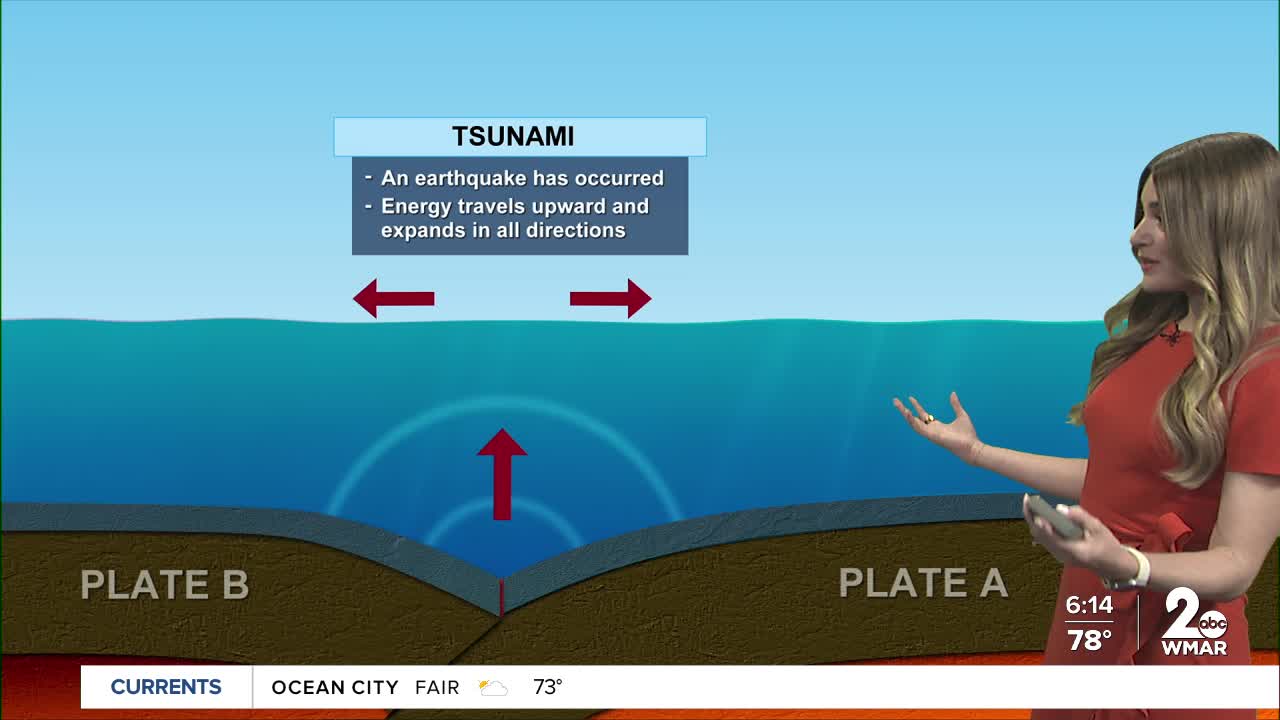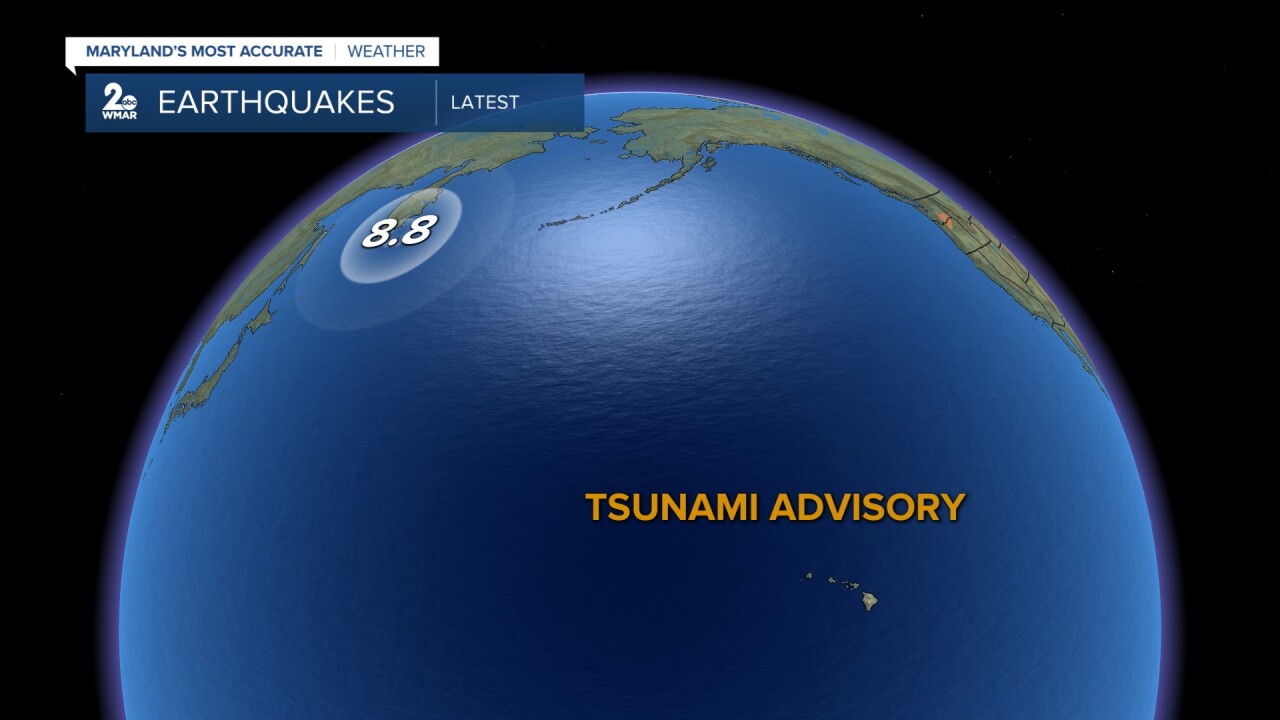A powerful 8.8 magnitude earthquake occurred along the east coast of Russia yesterday. This created a disruption in the typical wave pattern in the Pacific Ocean, which warranted Tsunami Warnings for the state of Hawaii early Wednesday morning. The alert has since been downgraded to a Tsunami Advisory as major tsunami waves are not expected to strike the coast of Hawaii. However, ocean currents around the islands will still be quite strong, which could be hazardous for swimmer and boaters near the marinas and harbors. A common misconception about tsunamis is that it is just a single giant wave. In reality, tsunamis are a series of waves that can linger for several hours.
Tsunamis form from large-scale disturbances (earthquake, volcanic eruptions, underwater landslides, etc.). According to the NOAA, about 80% of all tsunamis are created by earthquakes. When the 8.8 magnitude earthquake occurred, it displaced the large volume of water which transferred energy upwards and outwards in all directions. This creates a series of waves. They can lead to significant damage to property by creating coastal flooding and powerful currents.

As the wave travels closer to the shoreline, the water initially begins to recede from the coast and the wave height increases. When the series of waves reaches the shore, the energy gets compressed and is forced upwards. Coastal communities are most at risk when tsunamis occur.
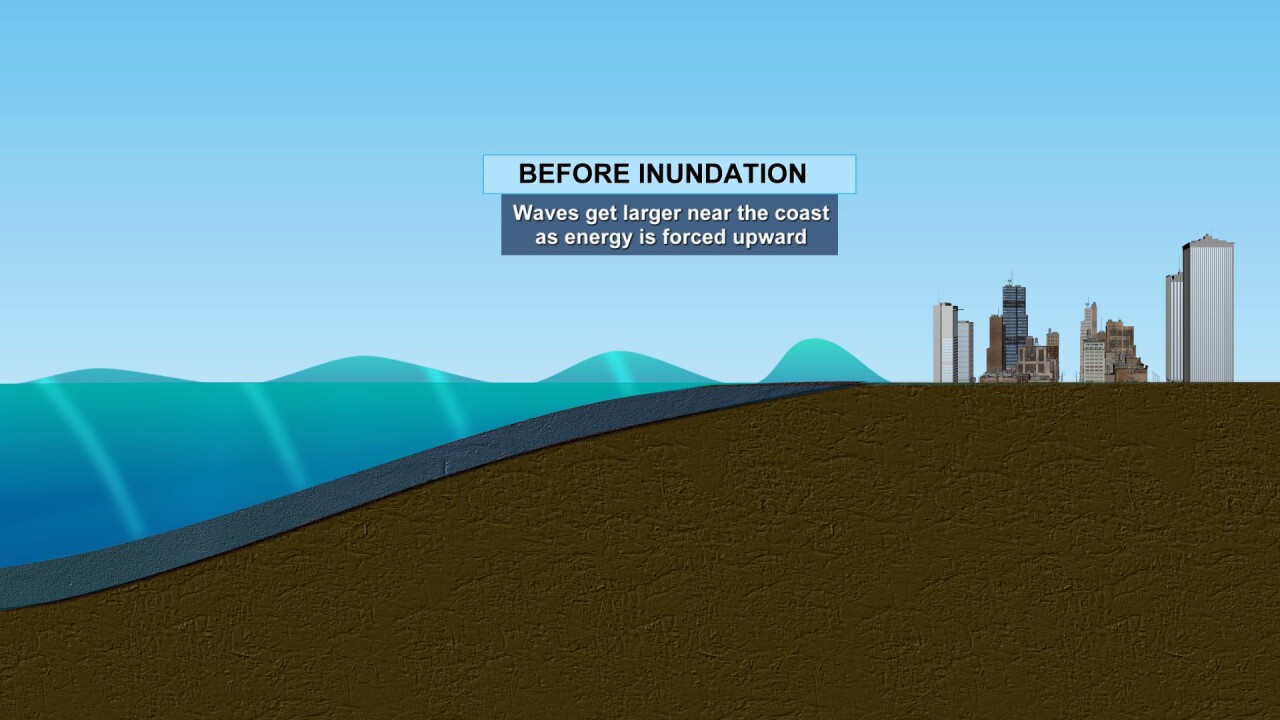
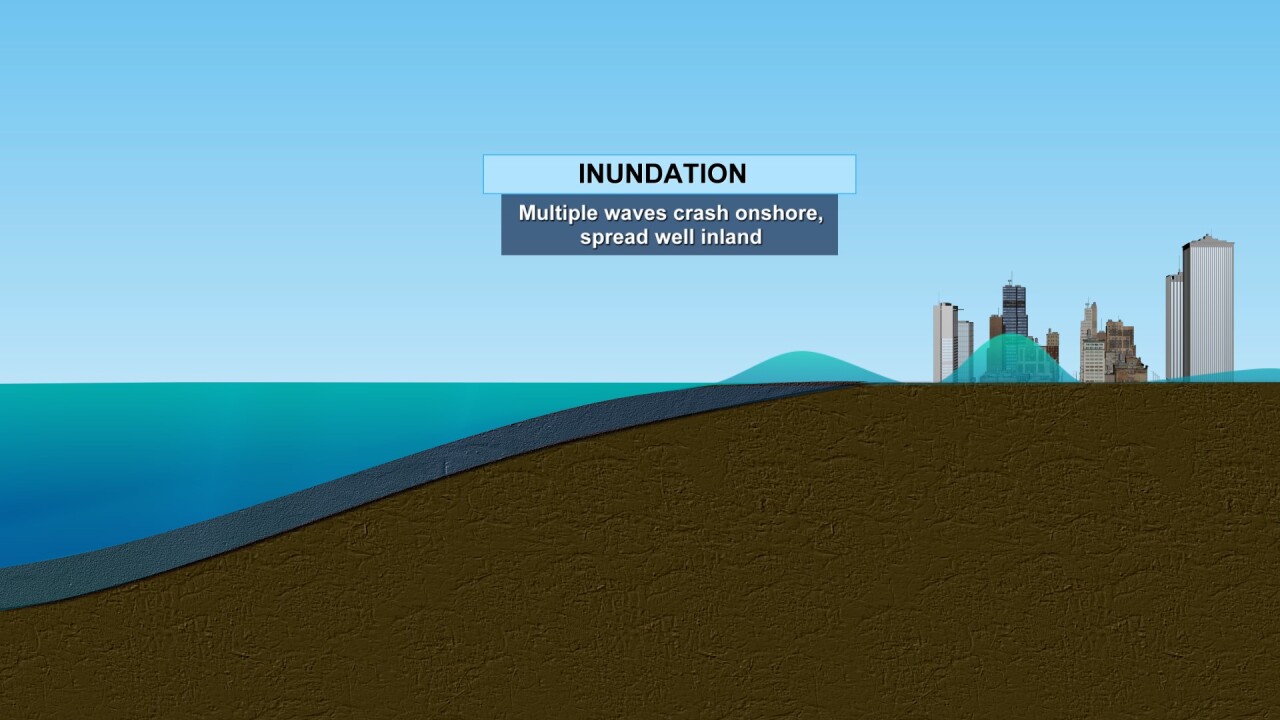
In the open ocean, tsunamis can travel extremely fast, up to 500 mph in some instances! The deeper the water, the faster the speed of the wave.
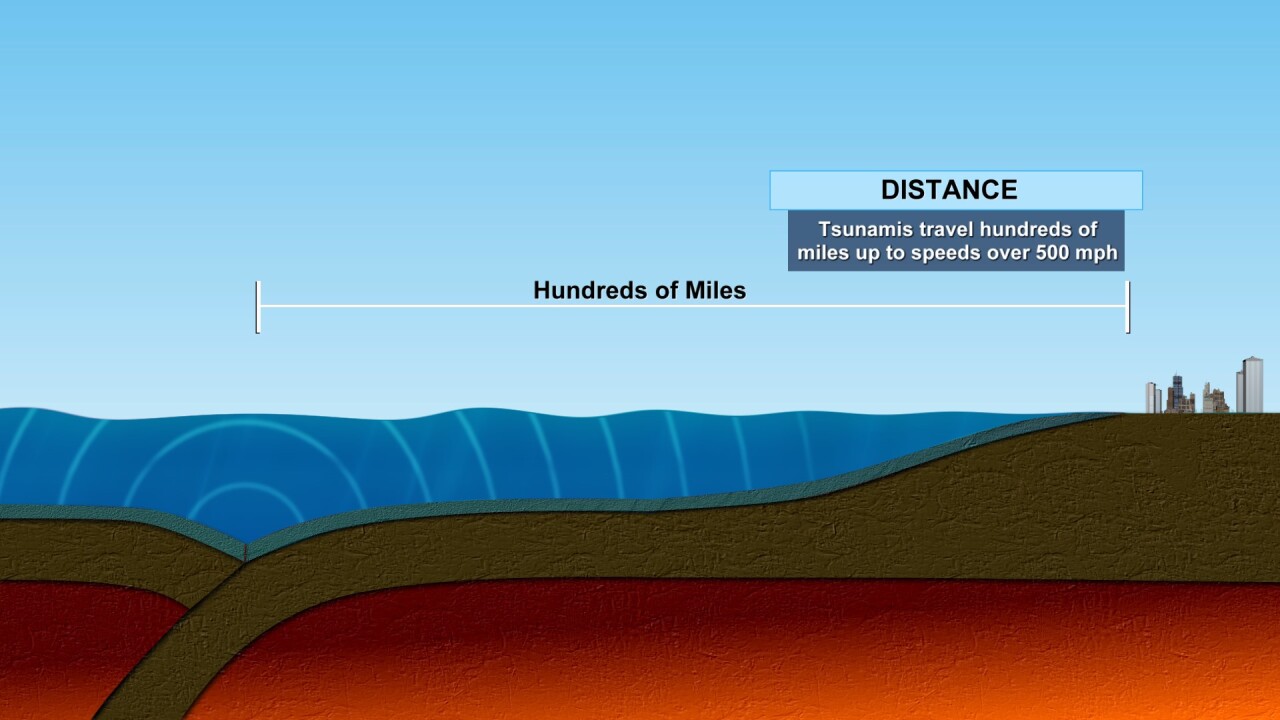
#StevieDanielsWX #Tsunamis
Email: stevie.daniels@wmar.com
Facebook: www.facebook.com/StevieDanielsWX
X: www.twitter.com/StevieDanielsWX
Instagram & TikTok: stevie_daniels_

